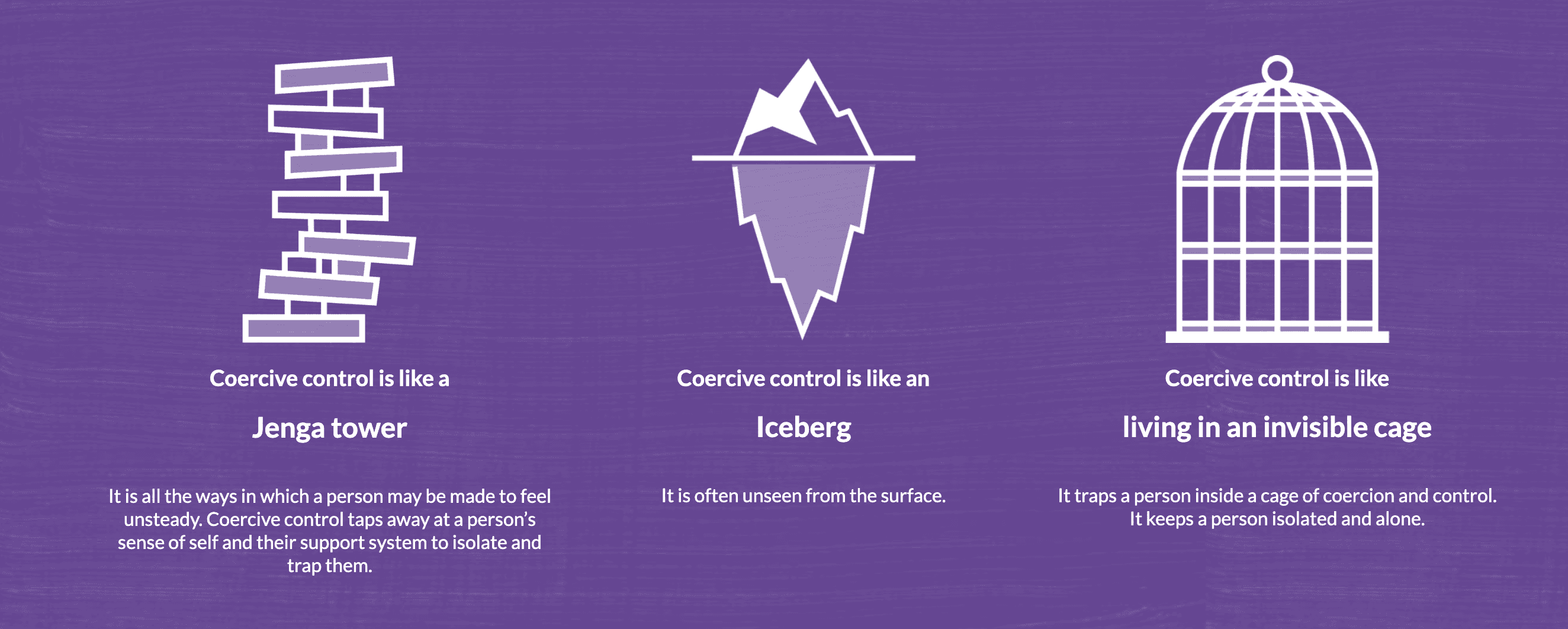What Is Coercive Control?
Coercive control, a term created by Rutgers professor and academic Evan Stark, is an umbrella term for a set of pervasive ongoing abusive tactics and behaviours. It encompasses a range of persistent abusive behaviours that service providers should be aware of when working with immigrant communities.
The abuser's goal is to dominate and make the victim completely submit to them. Common manifestations of coercive control in immigrant families may include:
These tactics:
- Undermine an individual's sense of self-worth
- Restrict personal freedom, independence, and expression of cultural practices
- Create an environment filled with confusion and fear, where individuals feel they are constantly under surveillance
- Create invisible barriers that limit the victim's ability to seek help or support (For example, feeling as though one is trapped in an invisible cage)
To visualize how an individual might experience coercive control, see the diagram below.

It's essential to approach coercive control with cultural sensitivity. Behaviours that may be perceived as controlling in mainstream Canadian culture may be normal in some immigrant communities. As service providers, we must prioritize an awareness of cultural diversity when implementing the practices mentioned above. Embracing this awareness is essential for effective and inclusive services.
Question Time
How is Coercive Control best defined?
What is the primary goal of coercive control?
References:
Coercive control has been defined in various ways by social researchers and organizations. For a deeper understanding, explore the descriptions provided by Evan Stark and Sagesse. Their insights offer valuable perspectives on the meaning and experience of this form of silent violence.
